CIA Sponsored Terror, Civil Liberties, Criminalizing Dissent, Gaza, Human Rights, Political Prisoner, Prison Industry, Supreme Court, Surveillance, Targeting Muslims, Torture
Podcast: Play in new window | Download
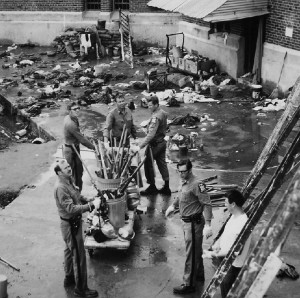
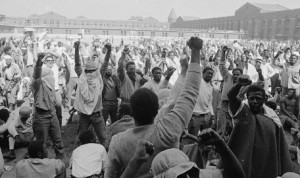
Special on Mass Incarceration : Socialism and Democracy – Lessons from Attica: From Prisoner Rebellion to Mass Incarceration and Back
Fyodor Dostoevsky’s observed that “the degree of civilization in a society can be judged by entering its prisons.” Our guest Dr. Heather Ann Thompson reports in her recent article Lessons from Attica: From Prisoner Rebellion to Mass Incarceration and Back, that according to the Prison Policy Initiative, by 2011 the United States was confining “more than 2.4 million people in 1719 state prisons, 102 federal prisons, 2259 juvenile correctional facilities, 3283 local jails, and 79 Indian Country jails as well as in military prisons, immigration detention facilities, civil commitment centers, and prisons in the U.S. territories.
Dr. Heather Ann Thompson:
- Its important to really examine the broader history of prisons and criminal justice because trying to explain how we became the world’s outlier with so many incarcerated and such a hugely disproportionate number being persons of color, we have a lot to explain.
- Something very clearly happened after the 1960s to our criminal justice system, even more specifically after 1971. Clearly it had a lot to do with the rebellions of that period.
- Sorting all that out is what I’ve been doing for the last decade.
- Just like had happened after the civil war, sort of the first great moment of civil rights unrest in this country when we had 4 million newly freed African Americans demanding a real voice in our society, and meaningful equality.
- The response of that society, in that case, in the South, was to change all the laws. To all of a sudden criminalize black spaces in new ways and almost overnight southern prison institutions not only exploded in population but they went from being all white to all black.
- You fast forward to the 1960s and I think something similar happened.
- Many northern politicians begin to conflate urban protest and unrest, the slow pace of the equality and gains with crime, and began a war on crime in 1964 with Lyndon Johnson before there was immediately impressive rise in crime.
- We need to know much more about the people that were inside the prison walls.
- What happened in the American prison system that we see today, what seems to be the ultimate control, the ultimate punitive penal state.
- One of the long standing lawyers in this case Elizabeth Fink fought this battle on behalf of the Attica brothers for decades and decades. These are the people who are the real repository of that history.
- My role as a scholar, what I tried to do was rescue for the American public, some of those hidden histories. You had a 4 day congregating thousands, 1300 men inside of a penal institution that were willing to stand together and black, Puerto Rican, white and say to the state, we’re willing to negotiate with you logically and in good faith to try to improve the conditions under which we live.
- What made it so really remarkable was the world’s attention was focused on it. Everybody was watching Attica.
- But ultimately, New York state was unwilling to give in on the most important demand which was amnesty.
- Amnesty for which once they surrendered, they would not be charged for any riot-related crimes that the state would alleged they’d committed and an assurance that they would not have reprisals.
- They – state troopers- retook the prison in an utter brutal fashion. They mowed down people first with tear gas then guns, handguns, deer slugs, shot guns, killing scores of people, wounding scores of people.
- Then, realizing the blood bath, officials stood outside and told the world, that the prisoners are the ones that killed the hostages, and from then on tried to control the story, cover up what really happened, that began the 40 year saga of trying to tell the truth of what happened at Attica.
- Had I not met people like Elizabeth Fink who could help me understand this story and had I not spent ten years digging in every knook and cranny to try to uncover the story, this would have been a difficult story to tell because the state has gone to enormous lengths to keep a lid on it.
Guest – Dr. Heather Ann Thompson, is a native Detroiter currently on faculty in the Departments of African American Studies and History at Temple University. In 2015 she will be joining the faculty of the University of Michigan in Ann Arbor. Thompson has just completed the first comprehensive history of the Attica Prison Rebellion of 1971 and its legacy for Pantheon Books.
—–
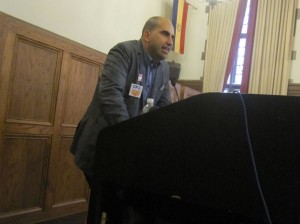
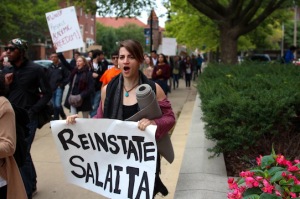
Professor Sues University of Illinois Over Firing for “Uncivil” Gaza Tweets
We bring you to a press conference held in New York City last week at the Center for Constitutional Rights. The Center is representing Professor Steven Salaita along with the Chicago civil rights law firm of Loevy & Loevy. Salaita was hired and then discharged before he could even start his job last summer at the University of Illinois. He was hired by the American Indian Studies program after a thorough vetting. After Israel attacked Gaza where some 2000 people were killed including 500 children. Salaita tweeted several what were termed “uncivil” messages on his twitter account. This was brought to the attention of Zionist donors to the University of Illinois who then pressured Chancellor Phyllis Wise to rescind the hiring. Professor Salaita’s case is probable the most important case in 50 years, not since the 60s when the Supreme Court overturned the non-communist loyalty oath has an issue of this importance arisen. Some 6000 professors have vowed to boycott the University of Illinois.
——-
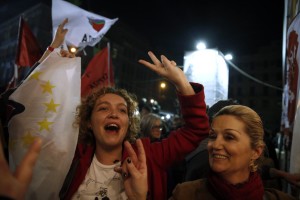

Greece’s Left-Wing Coalition Wins Majority
Last week in a historic election, the Greek people voted in the anti-austerity party of Syriza, led by Alexis Tsipiras winning a 149 seats of the 300 seat Parliament. In the previous 8 years, the Greek people have demonstrated massively, occupied government buildings and have gone on more than 30 general strikes. Now they’ve formed a party to take back power in government to effectuate a program that will call for cancellation of debt, nationalization of the banks, and expropriating closed factories. Will their attempt to alleviate much of the misery of the Greek population succeed? We’ll see.
Dan Georgakas:
- Austerity in Greece means 26 percent unemployment for at least 3 years, 60 percent unemployment for people under 30 which has caused 200 thousand college graduates to leave the country in the last 2 years.
- Greece had the lowest pensions in the EU.
- Wages which were the lowest in Europe were cut about a third.
- Prices in Greece are about the same in the EU elsewhere.
- 300 thousand businesses failed as of 2013.
- What austerity does, having taken away people’s money is raise the property tax and raise the gas and electric taxes.
- It’s a pretty desperate situation, food lines, there’s been a mass movement from the bottom.
- There are a lot of small left wing parties in Greece.
- What Syriza did was put together a coalition of left parties. That was very difficult to do because within the coalition there are Trotskyists, there are Euro-communists, environmentalists, anarcho-syndicalists and so getting to all those people into one room and agreeing on a program is not a very easy thing to do.
- But Syriza itself isn’t there for a traditional party. It is a coalition of parties that probably will transform in time perhaps into a coherent party.
- I would say that if anything characterizes the profile of Syriza its very anti-Stalinist. It wants to go from the base up and talks a lot about horizontalism.
- It’s quite a weak economy and say it will take decades to repair.
- In the minds of the leadership is capitalism and prosperity are incompatible.
- The steps they want to take are very modest, beginning with changing some of the cuts they made in the past, and beginning to deal with the corruption and tremendous waste of money.
- Same day he was inaugurated, he (Alexis Tsipras) went to Kaisariani where 300 Greeks were massacred by the Nazis as they were departing Athens. Most of the people massacred were communists or resistance fighters. Going there after being sworn as prime minister and laying a rose on the graves, he really served notice on the Germans that the days of us kowtowing and being bullied by you are really over and don’t you dare call us pigs anymore.
- People who contact me say that people are euphoric in Athens.
- We realize that the loans to Greece are really self serving. For instance, Goldman Sachs, arranged for Greece to enter the Eurozone in the first place by totally fraudulent cash arrangement.
- They loaned Greece money at a special rate so Greece could pay off its debt to look like it was solvent and then issued new bonds at even higher rates.
- pressproject.gr
Guest – Dan Georgakas, regular columnist for the National Herald, the leading Greek American weekly newspapero co-author of Detroit: I Do Mind Dying and coeditor of Solidarity Forever: An Oral History of the IWW. He was a frequent contributor to now defunct Journal of the Hellenic Diaspora and the Journal of Modern Hellenism. Dan has taught at NYU, CUNY, Van Arsdale Labor College, Columbia University and University of Oklahoma.
—————————————————————-

Please help support Law and Disorder by clicking on Fractured Atlas graphic. This radio show is now a sponsored project of Fractured Atlas, a non-profit arts service organization. Contributions for the charitable purposes of Law and Disorder must be made payable to Fractured Atlas only and are tax-deductible to the extent permitted by law. You can donate as little as 5.00 a month.
CIA Sponsored Terror, Civil Liberties, Criminalizing Dissent, Crony Capitalism, Habeas Corpus, Human Rights, Political Prisoner, Prison Industry, Supreme Court, Surveillance, Torture
Podcast: Play in new window | Download

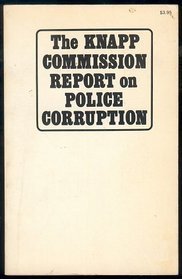
Blood On Their Hands: The Racist History of Police Unions
The NYPD police officer union’s outrageous assertion that New York Mayor Bill de Blasio had “blood on his hands” in the murder of two NYPD officers, is consistent with the reactionary role of police unions across the country. They came to prominence in the wake of the civil rights movement. Police unions have played a powerful role in resisting all manner police reforms and in defending police officers no matter how outrageous and racist their actions. Attorney Flint Taylor brought an analysis of police unions playing a major role in defending cops throughout the last few decades in his article Blood On Their Hands: The Racist History of Police Unions.
Attorney G. Flint Taylor:
- I started to look at this because I had been in battle with the union here in Chicago, the Fraternal Order of Police, since I’ve been a lawyer which is almost 45 years.
- After I saw what was happening in New York, I did some research on New York as well as brought back to memory a lot that had happened here in Chicago.
- In New York I took it all the way back to Mayor Lindsey when he attempted to deal with and bring about a civilian review agency of the police department.
- One of the instances (in New York) police showed their displeasure by running through the black community banging on the tops of garbage cans, waving their guns around and Abe Beame had to get a restraining order to stop them.
- The racism of it all became more apparent under Mayor Dinkins reign in the 90s, when he again revisted the idea of strengthening the civilian review agency.
- Sometimes you find that the union is to the right of the police hierarchy.
- When I put together the article and studied New York over the last 50 years and brought together my understanding here in Chicago, is that they’re so fundamentally racist. They don’t even represent all of the cops.
- They represent the white power structure, the most reactionary aspects of the department.
- Whenever racism is at the heart of police actions, you’ll find the union shoulder to shoulder defending those actions by those cops.
- In Chicago it started around the Democratic National Convention in 1968. The murder of Fred Hampton and Mark Clarke, the Black Panther leaders.
- Of course the FOP became extremely actively involved in defending the indefensible in the Jon Burge police torture cases and has been at the heart of it here in Chicago for 20-30 years in resisting all forms of justice in the Burge torture cases.
- Right after he (Burge) was fired by the police department in the mid-nineties, the union had the temerity to organize a float to honor Burge and the two other officers who were found to have tortured . . . in the St. Patrick’s Day parade.
- The union here again is a white officers union – not only that – the white officers union, it represents the racist interests of a certain click of police officers that patrol the communities of color here in Chicago.
- Until there’s a fundamental change in policing and the justice system, the union is going to have that kind of power and is going to continue to flank on the right, what already a reactionary, military force which is the police department.
- It’s basically universal maybe more so in the big urban areas.
- We have to educate our brothers and sisters in the broader labor unions like the SEIU and the unions that support the correctional officers.
- Police unions reflect police departments, police departments are occupying forces. They were created to put down the working class. They were created to protect the interest of what is now the one percent.
- So, how could they be part of the movement that deals with workers’ rights and fights against racism when that’s what they’re defending?
Guest – G. Flint Taylor, a graduate of Brown University and Northwestern Law School, is a founding partner of the People’s Law Office in Chicago, an office which has been dedicated to litigating civil rights, police violence, government misconduct, and death penalty cases for more than 45 years.
—–
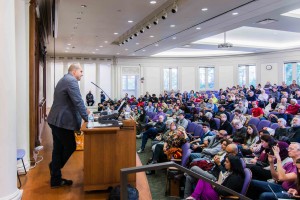
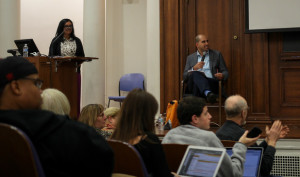
Inter-Nationalism: Encountering Palestine In American Studies
Professor Steven Salaita at age 39 had already written 6 outstanding books. He was a tenured professor at Virginia Tech University. He was offered a job with tenure at the University of Illinois in their American Indian Studies program. He accepted the job, and quit his other job, left his house, his wife did the same, left her job. They were enroute to Illinois for him to start working when he was told by Chancellor Phyllis Wise that he was not going to be hired. He was fired from a tenured job he had been offered at the University of Illinois because of his tweets criticizing Israel’s murderous war on the people of Gaza last summer .
Why? The university was under tremendous pressure as documentary evidence shows by private donors who said, you hire Salaita, we won’t give you money. The university caved. Salaita didn’t get his job. He’s now out of work and he’s about to file or will have filed a lawsuit trying to get his job back and reassert the principles of academic freedom, academic shared government and free speech. We hear a presentation by Steven Salaita titled Inter-Nationalism: Encountering Palestine In American Studies delivered at New York University November 2014.
——————————————————————-

Please help support Law and Disorder by clicking on Fractured Atlas graphic. This radio show is now a sponsored project of Fractured Atlas, a non-profit arts service organization. Contributions for the charitable purposes of Law and Disorder must be made payable to Fractured Atlas only and are tax-deductible to the extent permitted by law. You can donate as little as 5.00 a month.
CIA Sponsored Terror, Civil Liberties, Climate Change, Criminalizing Dissent, Habeas Corpus, Human Rights, NSA Spying, Prison Industry, RFID, Surveillance, Targeting Muslims, Torture, War Resister
Podcast: Play in new window | Download


U.S. Cuban Foreign Policy Changes Strategy: Normalizing Relations
Last year, in a sudden reversal of policy, the United States released the remaining three of the Cuban Five who were imprisoned for arrested in the United States while investigating Cuban exile groups accused of terrorism. The release was part of a prisoner exchange announced on when President Barack Obama ordered the restoration of diplomatic relations with Cuba, that has been isolated by a trade embargo for 54 years.
Sandra Levinson:
- When you’ve lived through 10 or 11 presidents and you’ve seen how bad our policy can be, and also the disappointment that people like me felt, since Obama had been elected, that almost nothing had been done for improving travel for Cuban Americans.
- The point at which I cried was when he said he was going to open an embassy in Havana, because once you got over the fact, the 3 political prisoners were coming home, that was sheer joy to realize along with the Cubans, they were crying too. They said we’ve finally been recognized as a government.
- I think it will be great for the Cuban artists.
- By the second day the people were saying we have to make sure we keep our culture.
- We have to be sure we keep our country.
- Cuba needs help with its infrastructure, it doesn’t need McDonald’s
- We still have the Helms-Burton law. We still have the embargo. I think our next fight is to get rid of the Helms-Burton law because that has done so much to strengthen the embargo.
- I think the Cubans will attempt to slow the flow of people from the United States to what they can manage.
- As we all know the infrastructure for tourism is not sufficient to take care of everyone. I’m surprised they didn’t recognize sooner.
- Clearly its because of US interest that we are doing this. We are not doing this to finally be nice to the Cuban revolution.
- cubaupdate.org / cubanartspace.net
Guest – Sandra Levinson, President and Executive Director of the Center for Cuban Studies. She was one of the Center’s founders in 1972. In 1991 Levinson spearheaded a lawsuit against the U.S. Treasury Department which resulted in legalizing the importation of original Cuban art. She is currently directing works at the Cuban Art Space, which she founded in 1999, to properly house and archive the thousands of posters, photographs and artworks which the Center has collected in the past 42 years
——
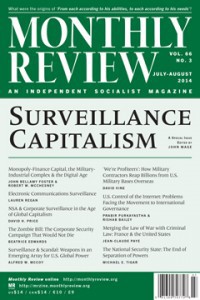
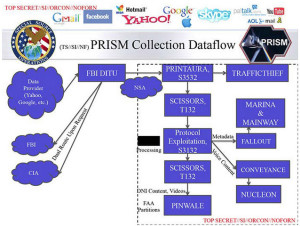
Electronic Communications Surveillance
In the recent Monthly Review, there’s an article titled Electronics Communications Surveillance written by attorney Lauren Regan. The article enumerates the various laws, acts and court cases that have led up to collecting information on millions of citizens such as phone, internet, and email habits, credit card and bank records. Nearly all of our on line activity is subject to being surveilled by the state. Lauren breaks it down from Electronic Communications Privacy Act of 1986, an extension of the 1968 Federal Wiretap Act, the FISA Act and on to the USA Patriot Act in 2001. The article is grouped into 3 areas, wiretaps and “electronic eavesdropping,” stored messages, and pen registers and trap-and-trace devices.
Attorney Lauren Regan:
- The corporations that are engaged in gray intelligence use the term threat assessment.
- They look at activist communities even individuals and determine what level of threat they pose to the profit making components of their enterprise.
- I think its important that activists engage in their own threat assessment as well.
- In the documents (FOIA requests) we learned that the corporations themselves want to maintain clean hands. They don’t want to get caught spying on Mom and Pop holding a banner on a street corner.
- They devised this scheme where there is this security firm and public relations firm that kind of open up their own shop next door.
- They’re often former FBI agents for some of these big corporations and industries. They will collect the intelligence and its up to these PR firms to put it into these “terrorist bulletins.”
- For a long time we knew that corporations often hired by the government itself but also hired by big industry has been going through open source intelligence. So they’ve been monitoring our websites and social media and email lists and press releases and any other public documents they can get their hands on in their 8 hour paid day.
- They compile all this information into reports and then they sell it to police or other corporations or the government.
- They call them issue monitoring or trend analysis. In essence it is attempting to both legitimize and make profit of spying on political groups and political activists.
- In my experience its less important to focus on the name of the corporation because they’re so slippery and constantly changing their names.
- The animal rights movement has definitely been a significant target for this type of spying.
- We were working with a number of different organizations who were afraid. Who were thinking of stopping their campaigns, because they were concerned they were going to be put in prison, that they were going to be labeled terrorists.
- One of the campaigns out of Pennsylvania, consisted of teachers, doctors, people who were once a week going out on street corners and holding a banner opposing fracking and they found themselves in a terrorist bulletin.
- Especially when you’re talking about giant coal industries, and tar sands industries. These are gazillion dollar corporations. They’re multinational in scope. They’re working together within their industries which means they have more money and resources to put road blocks in front of regular public interest citizens.
- There are things that you can do to make life more difficult for those that wish to spy upon you.
- Thor and VPN are ways to use the internet with less ability to be tracked or surveyed.
- We represent activists for free and we coordinate legal teams around the country to insure that activists have high quality representation, when they choose to risk their liberty for a cause.
Guest – Lauren Regan, the founder and executive director of the Civil Liberties Defense Center (CLDC), where she serves as our staff attorney as well. Ms. Regan operates a public interest law firm, The Justice Law Group, specializing in constitutional law, civil rights, and criminal defense. She is a founding board member and past president of the Cascadia Wildlands. She also serves as a Lane County Teen Court judge, Oregon State Bar Leadership Fellow, National Lawyers Guild, Eugene co-chair, and volunteers hundreds of hours a year to various progressive causes.
—–

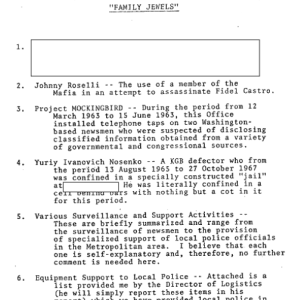
The Family Jewels: The CIA, Secrecy and Presidential Power
The surveillance and torture programs conducted by agents and contractors of the United States Central Intelligence Agency has a long sordid past. One of the first revelations of the CIA’s illegal activities released to the public was released in December 1974 by the New York Times. Details of surveillance, eavesdropping, detention and interrogation shocked readers. It was also became the foundation for deeper research by our next guest John Prados, a senior fellow of the National Security Archive in Washington, DC. He’s the author of the book The Family Jewels: The CIA, Secrecy and Presidential Power, where Prados recounts secret operations and how Vice President Richard Cheney played a leading role in intelligence abuses. He joins us today to talk about the Senate Select Committee on Intelligence Torture Report and the deeper connections based on his research.
John Prados:
- A semi-notorious document that was known as the family jewels – this was a record of CIA abuses of the 1950s, 60s, and 70s, when they were spying on American citizens. In fact the revelation was so explosive at that time it lead to multiple investigations of the CIA by the Church Committee, the Pike Committee.
- I think that the CIA has a preoccupation with image. The episode of the “family jewels” is typical because at the time the intelligence agency’s director was Michael Hayden. Hayden, simultaneous with the release of the document gave a speech taking credit for thinking of releasing the “family jewels” themselves.
- In my book The Family Jewels I have a couple of chapters that documents this kind of activity.
- We have been waiting 2 years for the appearance of this report.
- If you look at the website that’s maintained by former director Hayden, and former director Porter Goss and former director George Tenant, you will see that they posted on their website declassified CIA documents, much more lightly redacted that were released as long ago as last summer.
- These are the first documents I have seen containing direct Whitehouse action and activity on the torture issue.
- The best piece of this relates to early 2004, where there was the United Nations international day of support for victims of torture. Tenant sends a memo to Condi Rice and requests that the Whitehouse reconfirm Bush Administration support for the torture program.
- When that was not immediately forthcoming, they did this again.
- CIASavesLives.com
- These things were released as part of the argument that was made by former intelligence officials that torture was approved and legal.
- Not just damage control but the perpetrators, the agency officials responsible for this program,they know its not legal, they know its morally reprehensible. They’re operating under the fig leaf of this presidential authority and this mumbo jumbo Department of Justice legal memo network.
- If there’s a breath of questioning it all of a sudden, they’re not covered anymore. That’s the reason for the sensitivity and the reason why the CIA suddenly erupted in this effort to reconfirm these authorities.
- If you delete material from the documents in such a way that the public can’t tell that the material the CIA got was useful, or misleading everybody.
- The Senate report is so important because it shows on all of these cases, they took the ones twenty ones, the CIA most claims they got information for them. The report shows that in every one of those cases in fact they were getting information without resorting to the torture.
- I think we have a challenge. I think we need to work to make a wedge for accountability in this country. I do think Americans are shamed and embarrassed by this behavior. This is not what the United States is about.
Guest- John Prados is an author and analyst of national security based in Washington, DC. He is the author of more than twenty books and many articles on topics of current importance, presidential studies, international security; and diplomatic, intelligence, or military history. His current book is The Family Jewels: The CIA, Secrecy, and Presidential Power (University of Texas Press). Newly appearing in paperback are Islands of Destiny: The Solomons Campaign and the Eclipse of the Rising Sun. In addition Prados is author of titles on national security, the American presidency, and other subjects including Vietnam, the Soviet Union, and World War II. He is also a noted designer of boardgames on military strategy, intelligence, and diplomacy.
—————————————————————–

Please help support Law and Disorder by clicking on Fractured Atlas graphic (link is fixed). This radio show is now a sponsored project of Fractured Atlas, a non-profit arts service organization. Contributions for the charitable purposes of Law and Disorder must be made payable to Fractured Atlas only and are tax-deductible to the extent permitted by law. You can donate as little as 5.00 a month.
CIA Sponsored Terror, Civil Liberties, FBI Intrusion, Human Rights, Political Prisoner, Prison Industry, Surveillance, Torture
Podcast: Play in new window | Download


Prison State of America: Chris Hedges, Earl Amin, Amos Caley
Today we hear from 3 extraordinary people that will move you to anger, tears and outrage. Chris Hedges is an award winning journalist and former New York Times Middle East bureau chief . His recent article is Prison State of America outlines in detail how prison workers are gouged by corporate run private prisons. Earl Amin is a former Black Panther who was sentenced to life in prison for conspiracy to commit robbery and served 35 years which is the longest sentence in the state of New Jersey. Amos Caley is with the Interfaith Prison Coalition and a graduate student in the School of Social Work and is with the National Religious Campaign Against Torture, that exposes the abusive practice of solitary confinement in New Jersey prisons
Chris Hedges:
- What we’ve seen in the last few years is a steady assault, economic assault against prisoners and their families.
- Your minimum wage is about $1.30 a day. 8 hours of work, you’re doing prison labor, you work for the state. You’re paid a 1.30.
- They pay you for 5 days a week. That’s about 28 dollars a month.
- Deodorant, stamps, toothpaste, all of this stuff has risen by in many cases over 100 percent.
- Wages in the society at large have remained stagnant and in real terms declined and yet the commissary items have gone through the roof.
- The standard footwear are Reeboks, which cost 45.00. If you don’t have 45.00, they will sell you these sneakers with cardboard soles. The first time you go out in the yard, they’re shredded.
- If you don’t have any money, the prison system has thoughtfully provided a loan system so you can go into debt peonage.
- We have seen private corporations take over the phone system.
- We have seen the removal of other items like thermals. They used to give two blankets, now they give one.
- They’ve also privatized the system where you put money on a prisoners account. Jpay. Again charging draconian fees.
- Remember, we’re talking about very very poor families.
- What we’re seeing now is larger and larger numbers of people within the system who are not only broken, because most families don’t have the resources to send money in those incarcerated, because most of the incarcerated were the primary wage earner, people are going into debt.
- You have a 10 thousand dollar fine imposed on you when you’re sentenced. You’re earning 28 dollars a month, you have no outside resources.
- 25 years later, this is an actual case, you still owe 4 thousand dollars.
- People are finishing prison in debt. The very forces of predatory capitalism that are destroying working men and women outside the walls of prison, are running rampant inside the walls of prison.
- That is a kind of window of what’s going to happen to rest of us.
- Much of the military equipment is produced by federal prisoners – Kevlar jackets, body armor, canteens, etc
Guest – Chris Hedges, Pulitzer-Prize winning author and journalist. He was also a war correspondent, specializing in American and Middle Eastern politics and societies. His most recent book is ‘Death of the Liberal Class (2010). Hedges is also known as the best-selling author of War is a Force That Gives Us Meaning (2002), which was a finalist for the National Book Critics Circle Award for Nonfiction.
—–
Earl Amin:
- In 1967, I was drafted right out of high school into the Army.
- I met this white kid from Boston and he said Earl let’s go into town tonight which is Augusta, they some bad cats out there, I want you to meet them.
- I thought he was talking about Motown, Temptations, I never thought he’d talk about the Black Panthers. I went out there and heard these guys talking about the government.
- Later on I was transferred to Fort Dix, New Jersey – went to Central Park with my sister, Angela Davis was speaking. I had on my Army uniform. She said brother are you in the Army, I said yea. You been to the South? She said you don’t need to be this army you need to be in our army.
- I went AWOL that day. I joined the panthers that day until the FBI caught up with me six months later and charged me with being AWOL and sent me to Fort Leavenworth.
- I stayed there about nine months and they released me, went back to being a panther again, came home.
- Later on I was involved with something called Operation Breadbasket out of Chicago. We was out there feeding the poor people. I was out there when Fred Hampton was killed.
- I got arrested for guns. I went back to prison for a few months and came out.
- Then I got arrested for conspiracy to commit bank robbery, just talking about it. I was given a life sentence.
- I went to New Jersey State prison, Trenton.
- I started doing a lot of para-legal work and helping a lot of other people get out of prison.
- One judge told me if I was sentencing you today, I would give you 3 years.
- I was the first person in the history of the state to be sentenced to life for a robbery charge.
- Being 65, I took a job as a construction worker working 2 days a week, barely enough.
- I was listening to POP, Peoples Organization for Progress, with Larry Ham.
- For years and years I’ve earned a dollar thirty a day.
- That’s one of the problems, I’m comin home. I can’t get social security cause I ain’t paid nothing into social security.
- I can’t get a job because of my age, so what am I supposed to do?
- If you didn’t work, you didn’t get no toothpaste, you didn’t get no coffee.
- I personally, filed my own divorce.
- Rubin Hurricane Carter was my hero. Rubin resisted everything.
Guest – Earl Amin, a former Black Panther who was sentenced to life in prison for conspiracy to commit armed robbery. Earl has been released from prison after 35 years.
—–
Amos Caley – Interfaith Prison Coalition
- We’re realizing that talk is cheap. Looking at people who are most affected, and what they’re doing in terms of mobilizing themselves around this, is really a key to creating a sustained grassroots effort against the (predatory capitalist) system.
- We really have to organize around the demands of the families and the victims.
- That’s what the Interfaith Prison Coalition is about.
- One of things we’re doing is mounting a campaign to make it so that prisoners are paid minimum wage.
- We’re talking about a minimum wage for service workers on the outside, which will have a huge impact.
Guest – Amos Caley, a graduate student in the School of Social Work and is with the National Religious Campaign Against Torture, that exposes the abusive practice of solitary confinement in New Jersey prisons.
————————————————————

Please help support Law and Disorder by clicking on Fractured Atlas graphic (link is fixed). This radio show is now a sponsored project of Fractured Atlas, a non-profit arts service organization. Contributions for the charitable purposes of Law and Disorder must be made payable to Fractured Atlas only and are tax-deductible to the extent permitted by law. You can donate as little as 5.00 a month.
CIA Sponsored Terror, Civil Liberties, Criminalizing Dissent, Habeas Corpus, Human Rights, NSA Spying, Political Prisoner, Prison Industry, Surveillance, Targeting Muslims, Torture
Podcast: Play in new window | Download
Updates:
- Hosts Look Back At Several Legal Cases Of 2014
- Professor Steven Salaita Case Update
- Palestinians Join International Criminal Court After UN Rejection
- Michael Ratner: There Is An Immediate Jurisdiction In The ICC On The Occupied Territories
- Michael Ratner: Guantanamo Statistics 2015
- Michael Ratner: Afghanistan War Ends?
—–
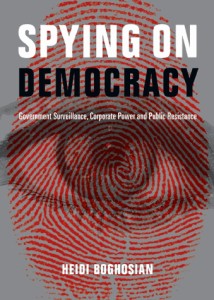
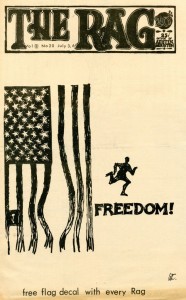
Dissent Under Surveillance: Heidi Boghosian
“Dissent Under Surveillance” was a panel held on November 7th at the Cooper Union in NY. It featured our own Heidi Boghosian, along with panelists Kevin Gosztola, Lisa Lynch, Ryan Shapiro and Carey Shenkman. Carey has been a guest on Law and Disorder. The panel was part of The Clandestine Reading Room, an exploration of leaked and declassified documents shedding light on government surveillance and secrecy in the US.
—-
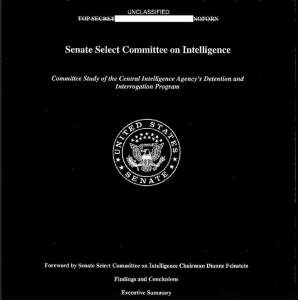
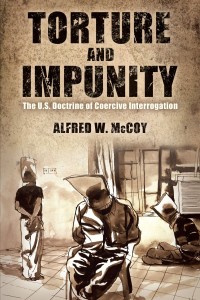
How To Read The Senate Report On CIA Torture
We welcome back author and professor of history at the University of Wisconsin, Al McCoy who recently published the article titled How to Read The Senate Report On CIA Torture. He calls it the single most important U.S. government document released to date in this still-young 21st century, yet its not without particular failings. McCoy distills the report into several potent areas. Among them, he points out how the report shows the “perpetrators as mendacious careerists willing to twist any truth to win a promotion or secure a lucrative contract.” Another is that the CIA has now been forced to admit that any link between torture and actionable intelligence is “unknowable.”
Professor Al McCoy:
- The report gives us a graphic record of just how brutal the CIA interrogations were.
- For years now we’ve been saying enhanced interrogation techniques or the acronym EIT’s or techniques which some consider to be torture, all kinds of twisted euphemisms. Well now, thanks to the senate report on the CIA on interrogation and incarceration everybody, citizen and senator alike, just say torture.
- Another aspect that emerges from the report is a graphic description inside the worst of the CIA managed prisons, the salt pit in Afghanistan. The cold and eternal darkness, the capricious brutality of the CIA interrogators. The absolute incompetence from the point of modern incarceration of the CIA junior prison managers who were sent out without training to run this prison.
- Through all of that the salt pit in Afghanistan can join that long lineage of state human cesspits of suffering.
- Another thing and I think the most important contribution of the senate report is to establish that all the CIA’s claims that brutal coercive interrogation somehow kept us safe, blocked terrorist plots, led us to Osama Bin Laden.
- No longer can the CIA claim the techniques work.
- There’s one little detail that doesn’t seem that important analytically that sticks out and becomes absolutely iconic.
- The iconic part of that report is the fact that the CIA paid 81 million dollars to 2 retired military psychologists who had no training, no language skills, no nothing. These 2 mediocrities are given 81 million dollars to run the CIA psychological and interrogation program.
- The Senate tells us there’s this female operative that was responsible for one of the biggest bungles of the war on terror. The seizure off the streets of a German national named el Mazri. He was rendered to the salt pit in Afghanistan and for 4 months he suffered the vicissitudes of that horrific prison, that iconic hell hole. Then the CIA figures out, oops. This is a complete mistake. This guy is not in any way a terrorist, and they literally dump him on a mountain top in Albania with a wad of cash and have a nice day.
- That operative then also claimed in testimony to the CIA inspector general in 2004 who was investigating the abuses inside the agency’s prisons that these techniques were working. The brutal interrogation, the water boarding of Khalid Sheik Mohammad the top al-Qaeda suspect had led the agency to another suspect named Majid Khan.
- It turned out that Majid Khan was already in CIA custody before the interrogation. Her statement was completely bogus. Who is this person?
- The CIA drew upon her primarily we believe to make her this fictional female CIA operative in Zero Dark Thirty this hero, whose almost obsessive pursuit of Osama Bin Laden and her participation in torture sessions led the Navy Seals to kill Osama Bin Laden in Pakistan.
- Her name is Alfreda Bikowski. She was the one who missed the signals on the 911 plot before it happened.
- She gave systematic false testimony as I described. She led the CIA on a false goose chase on a supposed terrorist cell in Montana and for all that she’s been promoted to the equivalent of a CIA rank as a one star general.
- In 2012, this civil servant had bought an 875 thousand dollar house in Virginia, a luxury residence.
- In short, instead of being reprimanded, demoted, punished for this cacophony of errors, the CIA operative had been rewarded.
- (the senate report) they don’t really explore the history, they don’t tell us where did this psychological torture come from.
- Where did this institutional reflex for torture come from? It comes from a 60 year history of the U.S. involvement of torture.
- The CIA was desperately afraid that the Soviets had somehow cracked the code of human consciousness.
- The sensory deprivation, the sensory disorientation leads to a very quick breakdown.
- Torture up to but not death was legal, and that’s what allowed the CIA to do all this.
Guest – Professor Alfred McCoy is the author of two recent books on this subject—Torture and Impunity: The U.S. Doctrine of Coercive Interrogation (University of Wisconsin Press, 2012) and A Question of Torture: CIA Interrogation from the Cold War to the War on Terror. Welcome to Law and Disorder.
———————————————————-

Please help support Law and Disorder by clicking on Fractured Atlas graphic (link is fixed). This radio show is now a sponsored project of Fractured Atlas, a non-profit arts service organization. Contributions for the charitable purposes of Law and Disorder must be made payable to Fractured Atlas only and are tax-deductible to the extent permitted by law. You can donate as little as 5.00 a month.
CIA Sponsored Terror, Civil Liberties, Criminalizing Dissent, Gaza, Guantanamo, Habeas Corpus, Human Rights, Political Prisoner, Surveillance, Torture, Truth to Power
Podcast: Play in new window | Download
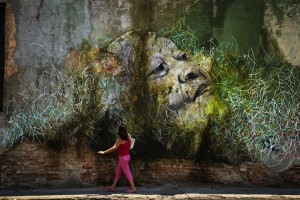

U.S. Cuban Foreign Policy Changes Strategy: Normalizing Relations
We’re joined today by attorney Michael Krinsky, a partner in the famous law firm of Rabinowitz, Boudin, Standard, Krinsky & Lieberman. This the firm that almost has been from the beginning representing the government of Cuba. We speak with Michael about the dramatic reversal of policy and the recognition by the United States of the Cuban government and the eventual establishment of joint embassies. We also speak about the returning to Cuba of the three remaining anti-terrorist Cuban fighters who have been in American prisons for 16 years. Three men of the Cuban Five. That, plus we discuss the changing of the commercial relationships between the United States and Cuba.
Attorney Michael Kinsky:
- It was an extraordinary moment. Word got around that Raul Castro was going to talk to the Cuban people on television at Noon, so everyone ran to find a television, including me.
- I think many people expected Obama to take some minor measures to test the waters perhaps to get things moving.
- Most people were quite surprised about the tone of his speech and what he said.
- I happen to be at a conference of US and Cuban scholars, which were talking about US-Cuban relations, that’s where I saw President Castro’s speech. The first thing he said of course was the cuban heroes. The 3 of the remaining Cuban Five and the place broke into pandemonium. People jumped up literally hugging each other. People were crying, then they quieted down and they listened to the next thing.
- And then when he said President Obama and I have agreed to reestablish normal diplomatic relations. There was silence. Then people half a second later absorbed and again there was a tremendous commotion.
- People felt a sense of triumph. After 55 years of holding despite the Bay of Pigs, despite the economic blockade, despite the special period when the trade with the Soviet Union collapsed, they had held on. In the end, someone put it, the United States came to us.
- You could see it in the streets, you could see it in the restaurants, you could see it in the offices. People were happy.
- They were literally smiling for days afterward.
- The embargo has been in effect for 54 years. It’s as comprehensive an embargo as this country has ever imposed, as any country has every imposed against any country.
- It’s not simply the US saying we the United States won’t trade with Cuba. A major part of it is extra-territorial reach. The effort for Cuba to make trade with third countries difficult and impossible.
- They can’t get US parts for their equipment.
- They can’t use US dollars for international transactions, which is the currency of international trade.
- Shipping to Cuba is made extremely difficult because of the US law that says if a ship goes to Cuba it can’t come to the United States for six months.
- Everyone in Cuba lives on a daily basis what they rightfully call a blockade.
- A blockade implies an effort to interrupt, disrupt trade between Cuba and a third country.
- There is nothing there about Cuban products being sold in the United States. It’s all one way.
- Cubans have developed a lot of innovative medical products that doctors are very excited about.
- There was nothing in the announcements about regular airplane service between the two countries.
- (Michael Ratner: The president has the authority to license almost everything, every economic transaction with Cuba at this point)?
- Right export, import, financial transactions, loans, credits, investments, all of these things are within the president’s licensing authority.
- The United States did not want a left wing socialist revolution to succeed in the Americas.
- The theme publicly and internally in the US government, until about 1991, 1992 and then there was a shift. Then for the first time, the United States publicly started talking about the goal of US policy including the blockade was to change the internal character of the Cuban system. The Cuban government.
- Civil liberties, free elections, free speech – those became for the first time the articulated goals of US policy.
- Guantanamo Bay used to be a Naval Station for coaling, ships operated on coal then. There was a 99 year lease between a captive Cuban government and the United States.
- I’m trying to find the right balance between a great deal of enthusiasm and not necessarily skepticism, but caution.
- It was nice to see the State Department make reference to this, the United States has claims for the nationalization the properties of its companies in Cuba in the early days. Cuba has articulated it has much greater claims against the United States for the blockade and for acts of economic sabotage which have died actually over the years.
- There are claims on both sides that have been articulated in the past.
Guest – Attorney Michael Krinsky, has been practicing law for forty-five years. For three decades, he has led the Firm’s representation of Cuba and other foreign governments, and their agencies and enterprises, as well as the Firm’s practice in the area of U.S. embargoes and export controls. Mr. Krinsky graduated from the University of Chicago’s College in 1965 and its Law School in 1968. After working with the American Civil Liberties Union in Newark, New Jersey, he joined the Firm in 1971.
——
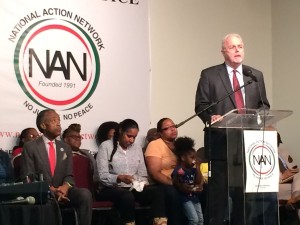
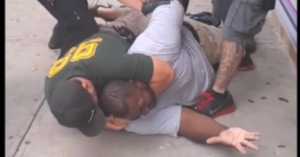
NYPD Unions Respond To Police Shootings, Says Protests At Fault
In the wake of the killing of two NYPD officers, a rift has widened amid police unions and the mayor of New York City. The New York City Police Benevolent Association Officers has suggested that the recent demonstrations against police misconduct and police violence have played a role in the execution style murders. To discuss the rhetoric from the police union and the tabloid media, we’re joined by attorney Jonathan Moore.
Attorney Jonathan Moore:
- It is a critical moment here in New York City and around the country on the issue of dealing with over aggressive policing and the militarization of police, I think they go hand in hand.
- We’ve been fighting this battle in New York for at least 15 years going back to the killing of Amadu Diallo and litigated the stop and frisk cases until the end of last year in to this year.
- Police unions have been an absolute impediment to any reform of the police department in the city of New York over the last several years.
- The union of that police department doesn’t reflect the membership anymore. The police department is close to being majority minority. Patrick Lynch is the vestiges of the old guard who never saw a police officer who did anything wrong.
- The overwhelming majority of these protests have been peaceful and law abiding. They have not been about calling for the death of police officers. They’ve been about calling for fair bias-free, constitutional policing.
- To use the death of these two officers as an attempt to stifle what as you say is growing mass movement, that hasn’t been seen in many years, is unfortunate and should be resisted.
- I’m glad that people are out there, these are important issues.
- The daily use of excessive force that goes on in many communities is never registered, never gathered by the police department. That’s a problem.
- The systemic problem is a culture within the New York City police department that has adopted an us against them mentality.
- There has to be a cultural change within the police department.
- In 2011, the police department was doing close to 700 thousand stops and frisks a year. The fear was that if you impeded the stop and frisks in the way they were doing it. We of course they were doing it based on race, and the federal court found that.
- Their alarmist response was if we stop doing stop and frisk, the crime rate will soar.
- They did 50 thousand stop and frisks this year, that’s down 650 thousand. That’s because they made a change. They stopped imposing quotas on police officers.
- By the way, on the pace of doing 50 thousand this year, and crime is still going down.
- What does that tell you. It tells you for all these years, they were unnecessarily harassing and stopping and frisking, young black men and young Hispanic men, mostly in our communities for no good reason.
- These unions blindly defend officers when they engage in misconduct and that hurts all police officers, all correction officers.
- In an organization like the NYPD of 35 thousand sworn officers, there are going to be people who don’t do what they should do. They should be rooted out and removed from the police department.
Guest – Attorney Jonathan Moore, is a civil rights lawyer known for his work in the stop and frisk suit against the city and representing 3 of the 5 wrongly convicted men in the Central Park jogger case in 1989. He is now representing the family of Eric Garner, a father of six who died from a police choke hold.
—————————————————

Please help support Law and Disorder by clicking on Fractured Atlas graphic (link is fixed). This radio show is now a sponsored project of Fractured Atlas, a non-profit arts service organization. Contributions for the charitable purposes of Law and Disorder must be made payable to Fractured Atlas only and are tax-deductible to the extent permitted by law. You can donate as little as 5.00 a month.

























